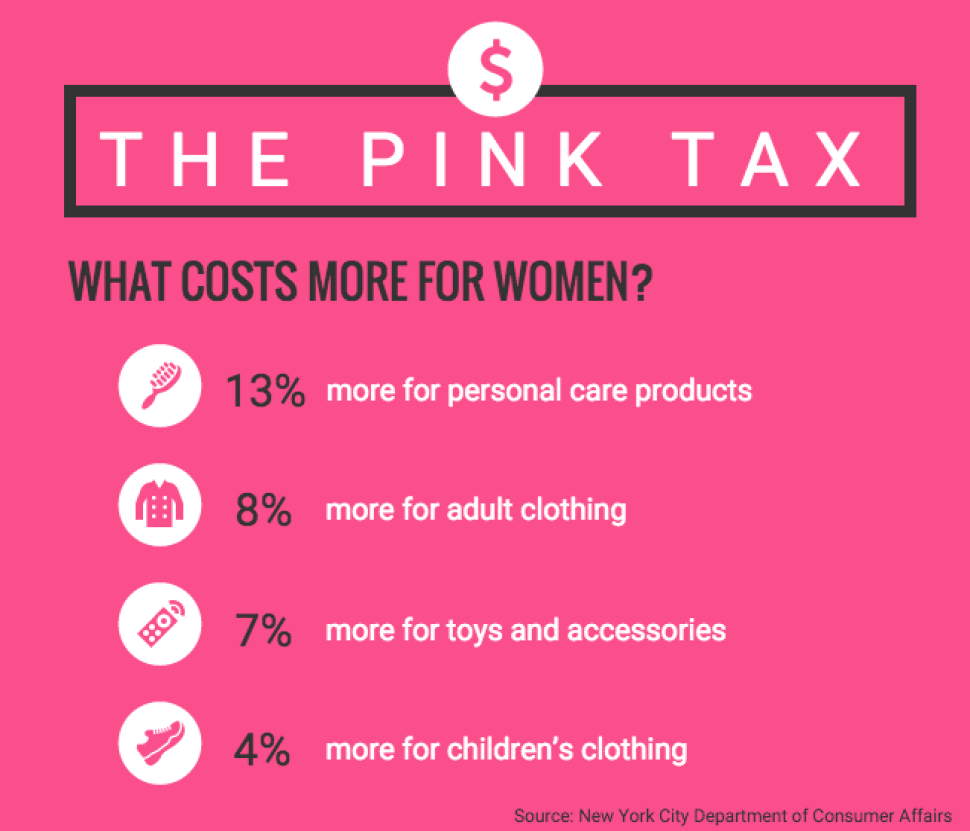Have you ever noticed that some products made for women cost more than their almost exact copies but targeted at men? This is because of the pink tax – the extra amount of money that women pay for everyday products, including personal care products, clothes and even kids’ toys. According to one study, on average, women’s products cost 7 percent more than similar products for men. That’s a bit ironic considering the fact that women also generally have lower wages.
Some of the examples of daily life products that are under the pink tax are razors, which generally cost a few cents more for women just for their pink packaging, and other hygiene products. But, in addition to goods, women face higher prices of services as well. CBS News conducted an experiment where female and male producers visited a handful of dry cleaners in NYC and requested the same service of dry cleaning identical white shirts. In the end their female producer was charged at least twice as much in more than half the businesses visited.
Another part of the pink tax is the tampon tax, a fee that women are charged for menstrual products. The average woman spends around $1,773 on period products in a lifetime. Governments tend to recognize them as luxury goods rather than necessities. As a result, period products are taxed as non-essentials, even though they are necessities for most women.
But what is the history of the pink tax and why does it exist? At first the pink tax was spotted in the early 1990s when California’s Assembly Office of Research found out that 64% of the stores in five major cities in the state charged a higher price to wash and dry clean a woman’s blouse in comparison to a man’s shirt. Since then the tax has not been fully eradicated.
The pink tax is caused by multiple reasons, a lot of which are intentionally discriminatory or driven by precedent and profits. A famous explanation used by firms is production differences. In some cases products marketed towards women cost more to produce because of the small changes in manufacturing due to different designs, such as color. But all of these design features are completely based on stereotypes and nobody ever really asked women or men whether they want their hygiene products pink and with the scent of flowers. Considering that, it is kind of weird to make women overpay for the products with basically the same exact ingredients but just with a more detailed package. Also, tariffs charged on the import of international goods are often higher on women’s products.
Another reason for the pink tax is price sensitivity. Some manufacturers believe that women are less price sensitive than men and are more likely to purchase a product regardless of the change in price. However, this argument is simply discriminatory and there is no real up to date data supporting this belief. In fact, there is a study proving otherwise.
It is absolutely unacceptable to charge women more for the same products. But what is the solution to the pink tax? The easiest way to avoid it is to buy men’s products instead of those marketed towards women and spread awareness on the topic of the pink tax. Fortunately, some firms and governments have recently recognized this problem and are trying to fight it. But there is still a lot of work to be done to eliminate the pink tax for good.
